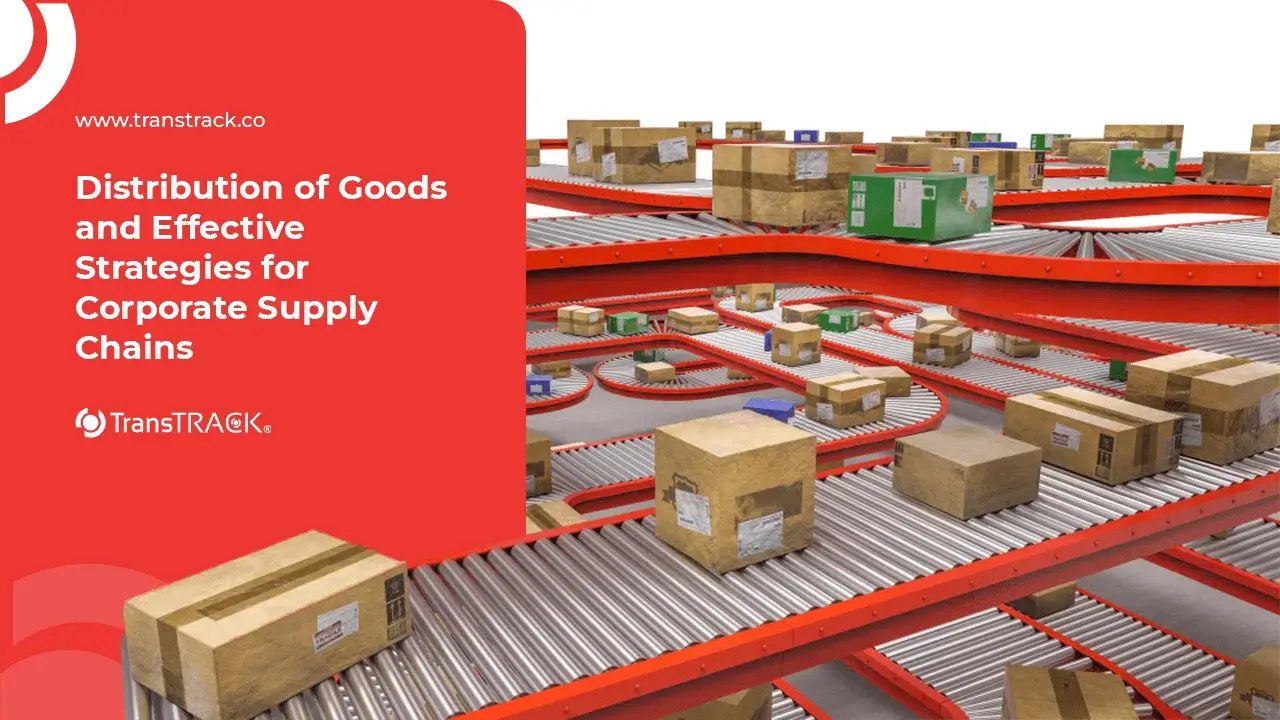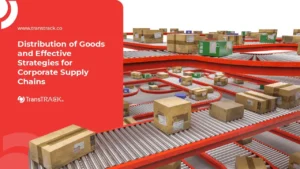Distribution of Goods and Effective Strategies for Corporate Supply Chains
Posted on November 27, 2025 by Nur Wachda Mihmidati

In this era of globalization, efficient goods distribution has become a key requirement for the success of a company’s supply chain. Challenges such as rising transportation costs, high customer expectations, and increasingly intense competition demand that companies continue to innovate in improving their distribution strategies. This TransTRACK article will discuss how companies can optimize goods distribution to increase efficiency, reduce costs, and improve customer satisfaction..
What is distribution of goods?
Goods distribution is the process of moving products from manufacturers to the hands of end consumers. This process is an important factor in maintaining smooth business operations across various sectors. Without an effective goods distribution strategy, companies will struggle to maintain service quality and customer satisfaction.
Key points about goods distribution:
- Goods distribution is a series of delivery activities from suppliers to recipients.
- The goods distribution process includes transportation, storage, and product delivery.
- The effectiveness of a goods distribution strategy will impact logistics costs and business service speed.
Why distribution of goods is the key to supply chain success
Goods distribution plays a crucial role in determining the speed of product flow in the supply chain. Without proper control and distribution strategies, the supply chain can be disrupted and reduce productivity. Here are the main reasons why goods distribution is so important for a company:
- Goods distribution ensures products arrive on time at sales points or to customers.
- Efficient goods distribution can lower company logistics costs.
- An optimal goods distribution system improves the company’s competitiveness in the market.
Common Problems in Distribution of Goods
Goods distribution often faces various obstacles that can hinder operational smoothness. These issues need to be understood so that companies can prepare targeted solutions. Here are common problems that frequently arise in the goods distribution process:
Late delivery and high costs
- The fleet is inefficient, thus extending delivery times.
- Transportation routes are not optimal and increase travel costs.
- Bad traffic and weather conditions increase the risk of delays.
Lack of visibility and tracking of shipments
- The absence of a real-time monitoring system makes it difficult to check the status of goods.
- Shipping information is often received late by customers.
- Coordination between logistics parties becomes less effective.
Inventory is not managed well / stock-out or overstock
- Demand is not predicted accurately so stock does not meet needs.
- Lack of warehouse integration system causes inventory data to be out of sync.
- There is waste of storage costs due to too much stock.
Geographical, regulatory, or infrastructure barriers
- Remote area conditions hamper land transportation access.
- Inter-regional shipping regulations add to the complexity of distribution flows.
- Inadequate infrastructure slows down the movement of goods.
Solution Strategy for Company Goods Distribution
To improve goods distribution effectiveness, companies must implement well-calculated and adaptive strategies. Modern technology, collaboration, and transportation optimization can be key to success. Here are important strategies that can be implemented in the goods distribution flow:
Selection and optimization of transportation modes according to the characteristics of the goods
- Use a mode of transportation that is appropriate to the type and volume of goods.
- Determine the most optimal and effective route for delivery.
- Combining several modes of transportation (multimodal) to be more efficient.
Use of information systems and technology (TMS, GPS tracking, route optimization)
- TMS helps manage delivery flows automatically.
- GPS tracking provides real-time visibility of goods status.
- Route optimization reduces costs and speeds up delivery times.
Integration of warehouse, logistics, and distribution (warehouse + dispatch + tracking)
- Digital warehouse systems improve the accuracy of incoming and outgoing goods data.
- Dispatch integration makes the shipping process more structured.
- Tracking is directly linked to inventory to minimize errors.
Collaboration with logistics partners & distribution partners
- Collaborate with experienced logistics service providers.
- Leverage partner distribution networks to reach more areas.
- Share operational data to improve mutual efficiency.
Performance indicators and distribution monitoring (KPI: on-time delivery, cost per delivery)
- KPI helps companies measure the success rate of goods distribution.
- On-time delivery is the main indicator of operational quality.
- Cost per delivery is used to assess cost efficiency.
Adaptation strategies for Indonesia’s geographical conditions: multi-drop, time buffer, flexible fleet
- Multi-drop will optimize distribution routes in one trip.
- Time buffers help anticipate the risk of delays.
- Flexible fleet facilitates adaptation to land, sea, and air routes.
Conclusion
Distribution of goods is a crucial element in maintaining a company’s smooth supply chain. By understanding the challenges and implementing appropriate strategies, the distribution process can be more efficient. Optimizing distribution of goods will help companies improve their competitiveness and customer satisfaction.
Overcome shipping delays, high operational costs, and lack of visibility! TransTRACK Logistic Service Integrator provides complete solutions to modern supply chain problems.

FAQ
What is the best strategy for large-scale distribution of goods?
For large-scale goods distribution, it is recommended to use a Transportation Management System (TMS) for automation. Selecting the most efficient transportation mode based on needs is also an important key. Additionally, planning delivery routes based on priority and distance should be a priority.
How to choose a mode of transportation for the distribution of company goods?
First, match the transportation mode to the type, volume, and characteristics of the products. Then, calculate the required operational costs and delivery time, and finally, consider geographical conditions and transportation route access.
Does real-time tracking technology really help distribution efficiency?
Yes, tracking technology provides full visibility of product status and speeds up communication between companies and customers. This technology also minimizes the risk of product loss or wrong routes.
What are the key performance indicators in goods distribution?
The main indicators in goods distribution are on-time delivery, cost per delivery, and inventory accuracy and the number of products successfully delivered without errors.
How do companies address distribution challenges for an archipelagic region like Indonesia?
To address these challenges, companies use a combination of land, sea, and air transportation. Additionally, companies add buffer time to anticipate delays. Of course, companies also leverage local logistics partners to reach hard-to-access areas.
Recent Post
Topic :
Recommended Articles

 Bahasa Indonesia
Bahasa Indonesia








